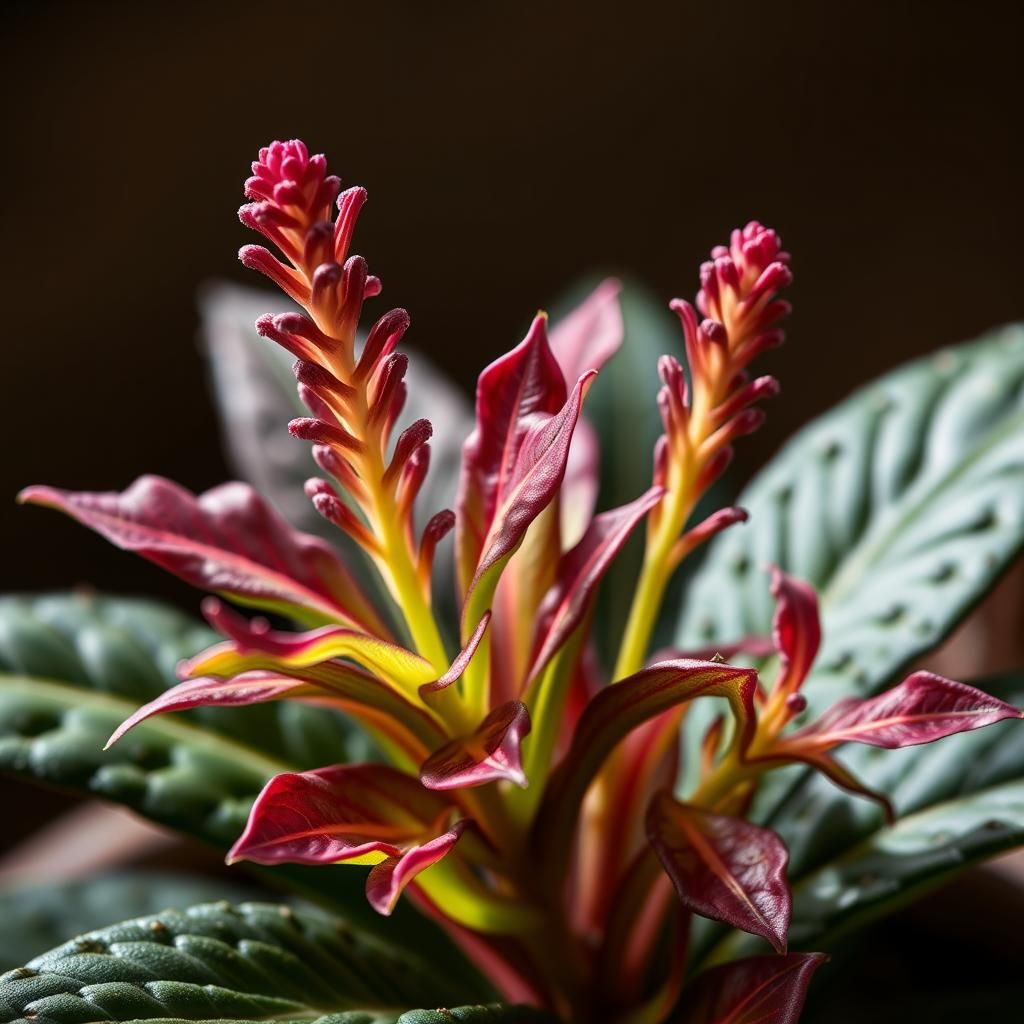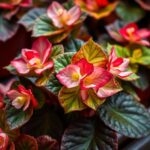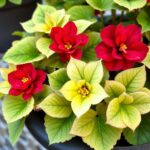Why is lobelia so hard to grow? Tips and Solutions for Successful Cultivation

Lobelia, known for its vibrant blue blooms and delicate foliage, can be a rewarding addition to any garden. However, many gardeners find it challenging to cultivate successfully. Factors such as temperature fluctuations, watering issues, and soil conditions can hinder its growth and flowering. In this article, we will explore the reasons behind the difficulties of growing lobelia and offer practical tips and solutions to help you achieve a thriving, beautiful display. By understanding the specific needs of this captivating plant, you can enhance your gardening experience and enjoy the stunning beauty of lobelia in your outdoor spaces.
Why is Lobelia So Hard to Grow?
Lobelia can be challenging to grow due to its specific environmental needs and susceptibility to pests and diseases. This plant typically prefers cooler temperatures and moist, well-drained soil, making it sensitive to both overwatering and drought conditions. Additionally, lobelia can be affected by root rot if planted too deeply or in heavy soils. Furthermore, its delicacy during the seedling stage requires careful handling, as even slight disturbances can hinder their growth. These factors combined contribute to the overall difficulty of cultivating lobelia successfully.
Specific Environmental Needs
Lobelia thrives in conditions that are often hard to replicate, requiring cool temperatures and specific levels of humidity. High summer heat can cause it to wilt or fail to bloom, while insufficient light can result in leggy growth. They generally flourish in partial shade, making it crucial for gardeners to find the right balance of light and temperature to support healthy growth.
Soil Requirements
The right soil is vital for lobelia's success, as they prefer well-drained, fertile soil rich in organic matter. If the soil is too dense or does not drain well, root rot can quickly set in, leading to the plant's decline. Therefore, incorporating materials such as compost or peat into the soil can enhance its structure and nutrient availability, helping lobelia establish strong roots.
Pest and Disease Susceptibility
Lobelia is prone to various pests and diseases, such as aphids and powdery mildew, which can significantly affect its growth. These issues can thrive in overly humid conditions or when plants are stressed. Regular monitoring and preventive measures such as good air circulation and the use of organic pesticides are essential to combat these potential threats.
Delicate Seedlings
The seedling phase of lobelia is particularly sensitive and demanding. These young plants require careful handling to avoid trauma that may stunt their growth. Since lobelia seeds are tiny, they often need to be sown on the surface of the soil rather than buried, as they need light to germinate. A gentle touch during transplanting and protection from extreme conditions can greatly increase the chances of success.
Watering Challenges
Balancing water supply is another challenge for growing lobelia, as they prefer consistently moist soil without becoming waterlogged. Overwatering can easily lead to root rot, while allowing the soil to dry out can cause stress and wilting. Gardeners must regularly check moisture levels and adapt their watering schedules according to weather conditions and the plant's growth phase.
| Factor | Description |
|---|---|
| Temperature | Prefers cooler climates, struggles in heat |
| Soil | Requires well-drained, nutrient-rich soil |
| Pests | Susceptible to aphids and diseases |
| Seedlings | Delicate during the initial growth phase |
| Watering | Needs consistent moisture without overwatering |
Why can't I grow lobelia?

Growing lobelia can be a challenging endeavor for a variety of reasons. Below are some common factors that might contribute to the difficulties in successfully cultivating this beautiful flowering plant.
Growing Conditions
Lobelia thrives under specific growing conditions. If these are not met, the plant may struggle to flourish.
See also:
- Light: Lobelia generally prefers partial shade to full sun. Too much direct sunlight can lead to scorched leaves, while too little can inhibit flowering.
- Soil: This plant requires well-drained soil rich in organic matter. Heavy soils that retain too much moisture can lead to root rot and other issues.
- Temperature: Lobelia is sensitive to extreme temperatures. Frost can damage young plants, while excessive heat may cause wilting.
Pests and Diseases
Various pests and diseases can hinder the growth of lobelia. Identifying these early is essential.
- Aphids: These small insects can sap the nutrients from your lobelia, causing stunted growth and yellowing leaves.
- Powdery Mildew: A fungal disease that appears as a white powder on leaves, it can weaken the plant if not treated promptly.
- Root Rot: Caused by overwatering or poorly draining soil, this can lead to dying plants.
Watering Practices
Proper watering is crucial for the health of lobelia. Both overwatering and underwatering present challenges.
- Consistency: Lobelia prefers consistent moisture, but it should not be waterlogged. Finding the right balance is key.
- Frequency: Depending on the climate, you may need to adjust how often you water. Too infrequent watering can lead to dry, shriveled plants.
- Water Quality: Chlorinated water can negatively impact plant health. Using rainwater or dechlorinated water is often preferable.
Fertilization
Ensuring your lobelia receives the right nutrients through fertilization can be a hurdle.
- Type of Fertilizer: Use a balanced, slow-release fertilizer to support gradual growth. Over-fertilizing can lead to lush foliage but fewer flowers.
- Application Timing: Fertilization should be done in early spring when new growth starts. Skipping this can result in weak plants.
- Organic Options: Incorporating organic matter, such as compost, can improve soil health and provide essential nutrients naturally.
Varietal Selection
Not all varieties of lobelia grow equally well under the same conditions, which can impact your success rate.
- Species: There are different species of lobelia, such as Lobelia erinus, which thrives in cooler conditions, while others may prefer warmer climates.
- Hybrid vs. Heirloom: Some hybrids might be bred for specific traits and may not adapt well to home garden conditions.
- Seed Quality: Ensure you are using high-quality seeds from a reputable source to increase the chances of successful germination and growth.
Do lobelias like sun or shade in pots?

Lobelia is a popular flowering plant often grown in pots and hanging baskets. When considering whether lobelias prefer sun or shade, it is essential to understand their specific light requirements for optimal growth and blooming.
Light Preferences of Lobelias
Lobelias generally prefer partial shade to full sun conditions depending on the specific species. However, the most commonly grown varieties, such as Lobelia erinus, thrive best with some protection from the intense afternoon sun. Here's a breakdown of their light preferences:
- Full Sun: In cooler climates, lobelias can handle full sun, especially in the morning.
- Partial Shade: In hotter regions, they perform better in dappled light or near shaded areas to prevent sunburn.
- Filtered Sunlight: A balance of sunlight and shade promotes lush growth and abundant blooming.
Potting Conditions
When growing lobelias in pots, the size and type of pot can affect their exposure to sunlight. Choosing the right pot and position is crucial for healthy growth. Here are some considerations:
- Drainage: Ensure the pot has good drainage to prevent waterlogging, which can stress the plant.
- Placement: Position the pot in a location that receives morning sun but filtered light during the hottest parts of the day.
- Mobility: Use mobile pots so you can move them as necessary to adjust for optimal sunlight as the seasons change.
Watering Needs
The watering schedule for lobelias directly influences their ability to thrive in varying light conditions. The light exposure will affect their moisture requirements:
- Consistent Moisture: Lobelias prefer consistently moist soil but not soggy conditions, particularly in sunny spots.
- Soil Type: Use well-draining potting mix to help retain moisture without waterlogging.
- Sun Exposure Impact: Monitor the soil more closely in full sun environments, as they can dry out more quickly.
Types of Lobelias
Different species of lobelias have varied preferences for sun or shade, making it crucial to choose the right type for your conditions:
See also:
- Lobelia erinus: Prefers partial shade and moderate temperatures, making it ideal for pots on patios.
- Lobelia cardinalis: Thrives in full sun to partial shade and is commonly used in garden beds and borders.
- Lobelia siphilitica: Best suited for moist, shaded areas, highlighting the diversity of light preferences.
Benefits of Sun and Shade for Lobelias
Understanding the benefits of both sun and shade for lobelias can help you create the ideal environment in pots. Each condition provides unique advantages:
- Sun Exposure Benefits: Plants in full sun usually produce more vibrant flowers and stronger growth.
- Shade Benefits: Provides a cooler environment that can reduce stress during hot weather while promoting longer blooming periods.
- Versatility: Adjusting light conditions can lead to a more extended flowering season and stronger overall health of the plants.
How to rejuvenate lobelia?

To rejuvenate lobelia, it is essential to follow a series of steps that can help restore its vitality and encourage further blooming. Lobelia, a popular flowering plant known for its cascading style and vibrant colors, can benefit significantly from proper care and rejuvenation techniques. Here are some effective methods to achieve this.
Understanding Lobelia Care
Lobelia thrives in moist, well-drained soil and prefers partial shade to full sun conditions depending on the species. Understanding its basic requirements is crucial for rejuvenation. Here are some important aspects to consider:
- Watering: Keep the soil consistently moist, especially during dry spells.
- Sunlight: Assess light conditions; adjust the plant's location if it’s not receiving the optimal amount.
- Soil quality: Ensure rich, well-drained soil to provide essential nutrients.
Pruning for New Growth
Regular pruning is an effective way to renew your lobelia plants. Cutting back the stems can stimulate new growth and encourage a bushier appearance. Follow these tips when pruning lobelia:
- Timing: Prune in early spring or after the first flowering season.
- Method: Cut back about one-third of the plant, focusing on any dead or leggy stems.
- Tools: Use sharp, clean shears to make clean cuts and avoid damaging the plant.
Fertilizing for Robust Growth
Lobelia benefits from regular fertilization to replenish nutrients in the soil, especially after pruning. Here’s how to effectively fertilize lobelia:
- Type of fertilizer: Use a balanced, water-soluble fertilizer every 4-6 weeks.
- Application: Apply the fertilizer according to the package instructions, ensuring not to over-fertilize.
- Timing: Fertilize in the spring and throughout the blooming season for best results.
Propagation Techniques
If rejuvenating your existing lobelia plants isn’t enough, consider propagating new plants from cuttings or seeds. This method can enhance your garden while providing fresh lobelia. Here’s how to propagate:
- Cuttings: Take cuttings from healthy stems and root them in moist potting mix.
- Seeds: Sow seeds indoors in early spring or outdoors after the last frost.
- Care: Keep the cuttings moist and provide warmth until roots develop.
Managing Pests and Diseases
To rejuvenate lobelia effectively, it’s important to monitor for pests and diseases that could hinder growth. Here are some essential management tips:
- Inspection: Regularly check leaves and stems for signs of pests like aphids or spider mites.
- Control: Use organic insecticides or neem oil to manage pest infestations.
- Disease prevention: Water at the base of the plant to minimize fungal diseases and ensure good air circulation.
Questions from Our Readers
Why is lobelia so hard to grow?
Growing lobelia can be challenging due to its sensitivity to environmental conditions. It requires consistent moisture, well-draining soil, and partial shade to thrive. Any fluctuation in these elements can lead to stunted growth or even plant death.
What specific environmental conditions affect lobelia growth?
Lobelia is particularly affected by temperature extremes and soil pH. Ideal growth occurs in milder climates; extreme heat or cold can shock the plant. Additionally, lobelia prefers a slightly acidic to neutral pH, and deviations from this can inhibit its growth.
See also:
How often should lobelia be watered for optimal growth?
For optimal growth, lobelia should be watered regularly to keep the soil moist, but not waterlogged. The key is to ensure the soil retains consistent moisture without becoming overly saturated, which can cause root rot.
Are there any common pests or diseases that affect lobelia?
Yes, lobelia can be affected by pests such as aphids and spider mites, as well as diseases like root rot and powdery mildew. Maintaining good air circulation and proper watering practices can help prevent these issues, ensuring healthier plants.

If you want to read more articles like Why is lobelia so hard to grow? Tips and Solutions for Successful Cultivation, we recommend you check out our Plants category.
Leave a Reply
Related Articles